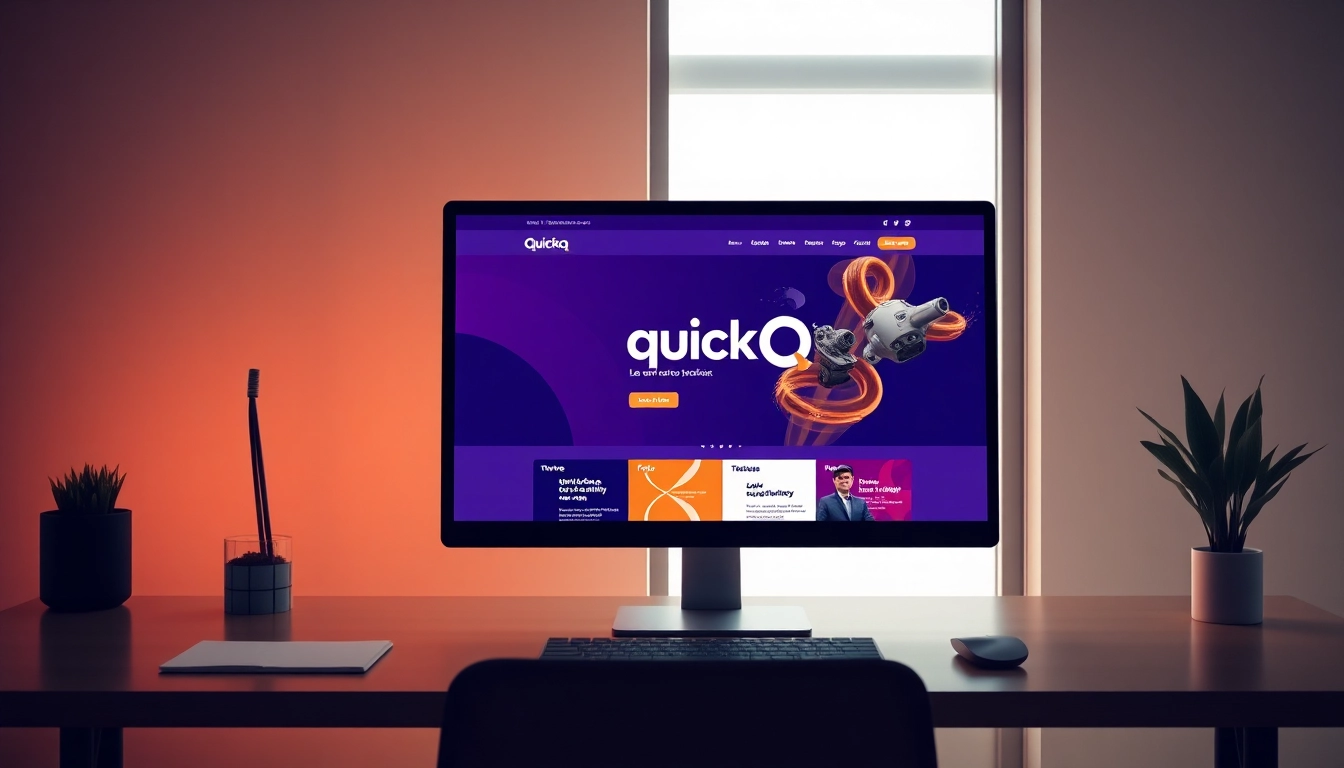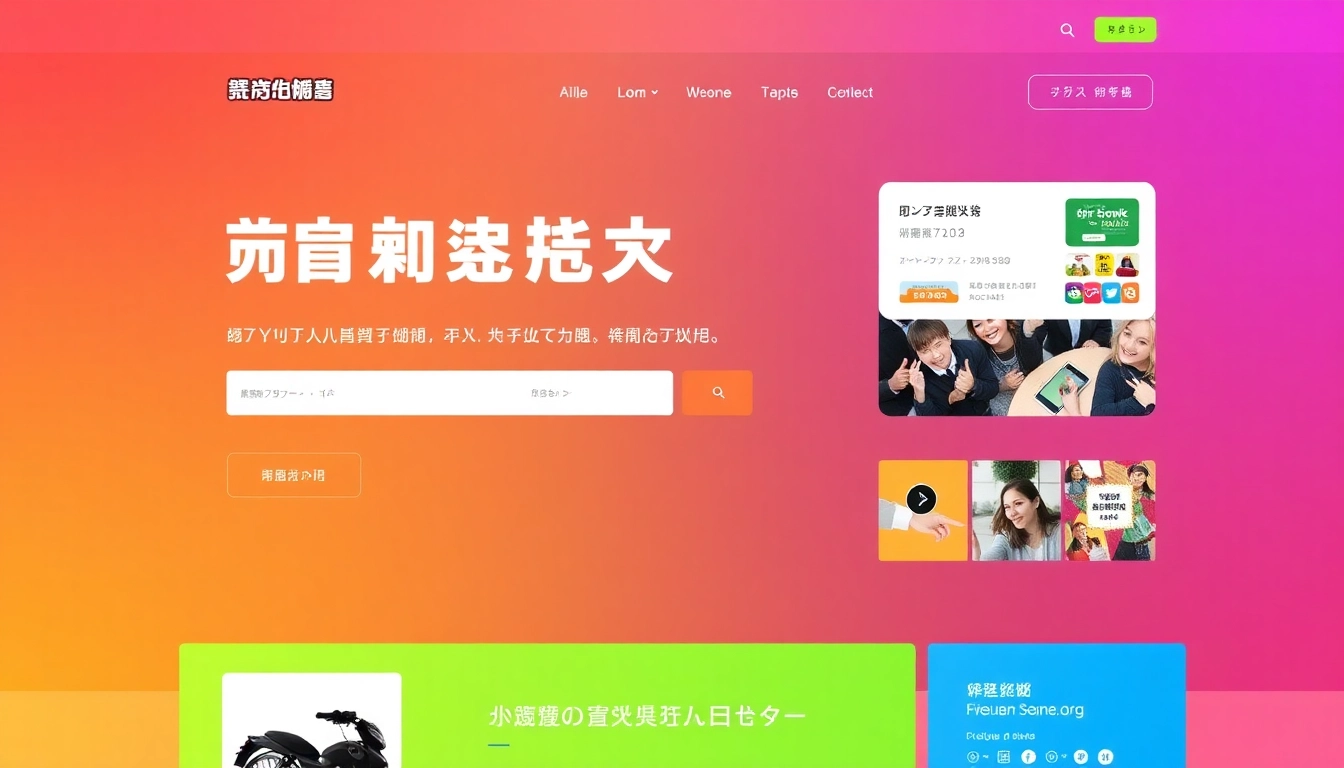Understanding Website Design Essentials
Website design is not just about making a site look visually appealing; it encompasses a wide variety of skills and disciplines tailored to produce and maintain effective websites. At its core, a professional website design goes beyond aesthetics to integrate functionality, usability, and user experience. This article delves into the essential components of website design, ensuring that both new and existing sites can leverage the fundamental principles to not only attract visitors but also retain them.
The Importance of User Experience in Website Design
User experience (UX) has become a central focus in website design. It refers to the overall experience a user has when interacting with a website, influenced by how easy and pleasant it is to use. Prioritizing UX can dramatically enhance site engagement and ultimately drive conversions.
Good UX design takes into account user needs, behaviors, and feedback, allowing designers to create interfaces that are intuitive. Effective website design should facilitate seamless navigation, quick loading times, and clear calls to action (CTA), making it easy for users to achieve their intended goals.
Research indicates that 88% of online consumers are less likely to return to a site after a bad experience. Therefore, investing in UX design is not just a luxury—it’s a necessity for any business wanting to create a successful online presence.
Key Elements of Effective Website Design
Creating a well-rounded website involves several key components that collectively create a successful design:
- Visual Design: Colors, typography, spacing, and imagery should align with your brand identity, enhancing the audience’s connection to your brand.
- Content Structure: Organizing content logically helps users find information quickly. A clear hierarchy of information builds trust and keeps users engaged.
- Navigation: A straightforward menu structure complemented by breadcrumbs can provide a user-friendly experience, allowing for easy movement across the site.
- Responsive Design: With the increasing use of mobile devices, ensuring your site functions effectively across different devices is crucial.
- Accessibility: Designs should consider users with disabilities, incorporating features like alt text for images and adaptable layouts, which can significantly broaden your audience.
Common Mistakes to Avoid in Website Design
Even seasoned designers can make missteps that undermine their site’s effectiveness. Here are some common pitfalls to avoid:
- Overloading Pages with Information: Too much text or excessive images can overwhelm visitors. Strive for balance through concise content presentation.
- Poor Color Choices: Colors should enhance the usability of the website rather than detract from it. Ensure high contrast between background and text.
- Ignoring Mobile Users: A website optimized for desktop may not function well on a mobile device, leading to high bounce rates.
- Neglecting SEO: Failure to optimize for search engines can lead to low visibility. Integrated SEO practices are vital to gaining traffic.
Defining Your Target Audience for Website Design
Understanding your target audience is critical in website design. Tailoring your design and content to meet the specific needs of your intended users can significantly enhance engagement and satisfaction.
Market Research Techniques for Web Designers
Effective market research can yield valuable insights into potential users’ preferences, behaviors, and needs. Here are key techniques:
- Surveys and Questionnaires: Deploy these tools to gather direct feedback from existing or potential users.
- User Interviews: Conduct in-depth discussions to delve into user motivations and preferences.
- Analytics Tools: Use software to track visitor behavior on your site. Understanding what pages hold user attention can guide design adjustments.
- Competitor Analysis: Observing competitor websites helps identify successful elements and gaps your site can exploit.
Tailoring Your Website Design to User Preferences
Once you have collected data, the next step is to incorporate your findings into your design. Consider the following strategies for tailoring your site:
- Personalized Content: Use analytics to offer personalized recommendations based on user behavior.
- Visuals That Resonate: Integrate imagery and design elements that reflect your target audience’s interests and preferences.
- Custom UX Flows: Create user pathways that prioritize action points based on the research results.
Utilizing Feedback for Continuous Improvement in Website Design
Ongoing feedback is essential to the success of any website. Mechanisms like user feedback forms, comments, and engagement metrics serve as valuable tools for continuous improvement. Regularly scheduled audits can help pinpoint areas for redesign while harnessing user insights to foster loyalty and retention.
Design Principles that Boost Engagement
Engagement is crucial for building a loyal audience. Implementing established design principles can significantly improve user interaction and retention.
Visual Hierarchy and its Role in Website Design
Visual hierarchy involves arranging elements in a way that clearly indicates their importance. The strategic use of size, color, and placement guides the user’s eye to the most critical information. Key techniques include:
- Headings and Subheadings: Use varying font sizes and weights to denote importance.
- Color Contrast: Important CTAs should stand out with bolder colors.
- White Space: Adequate spacing around elements can help segment information and enhance readability.
Color Theory and its Impact on User Interaction
Colors evoke emotions and can influence user behavior. Understanding color theory allows designers to select palettes that not only align with brand identity but also enhance user engagement. Key considerations include:
- Brand Color Psychology: Research how different colors affect human perception and response.
- Consistency: Maintain color consistency across all pages to reinforce brand identity.
- Accessibility: Use color blindness-friendly palettes to ensure inclusivity.
Responsive Design: Adapting to All Devices
With a growing number of users accessing websites on mobile devices, responsive design has become essential. This approach ensures that your website adjusts to different screen sizes without losing functionality or appeal. Considerations include:
- Fluid Grids: Design layouts that can resize fluidly based on the screen dimensions.
- Media Queries: Utilize CSS techniques to modify styles based on device characteristics.
- Flexible Images: Images that adapt in size while maintaining quality boost visual appeal across devices.
Leveraging Technology in Website Design
Incorporating the latest technology in website design can simplify processes, enhance user experience, and deliver better results.
Introducing AI Tools in Website Design Processes
Artificial Intelligence (AI) is revolutionizing how websites are designed and maintained. AI-driven tools can help automate routine tasks and generate data-driven insights. Popular applications include:
- Chatbots: Automated responses can improve customer service on sites.
- Design Assistance: AI can provide layout suggestions based on user preferences.
- Predictive Analytics: Analyzing user behavior with AI can yield insights that inform design decisions.
The Role of CMS Platforms in Simplifying Website Design
Content Management Systems (CMS) simplify the process of creating and managing website content. They often come equipped with themes and plugins designed to enhance website functionality. Benefits of using a CMS include:
- User-friendly Interface: Even non-technical users can easily update content.
- SEO Features: Many CMS platforms include built-in SEO tools to help optimize your site for search engines.
- Scalability: As your business grows, a CMS can accommodate expansion without significant redesign efforts.
Choosing the Right Design Software for Your Needs
The right design software can improve efficiency and quality during the design process. Considerations for selecting software include:
- Functionality: Identify your specific needs, whether for graphic design, prototyping, or coding.
- Collaboration Features: Opt for tools that allow for easy collaboration amongst team members.
- Integration: Ensure the software can integrate seamlessly with other tools in your design process.
Performance Metrics for Measuring Website Design Success
The ultimate measure of your website design’s effectiveness is its performance. Utilizing the right metrics allows you to assess whether your design meets the intended objectives.
Key Performance Indicators to Track
Monitoring relevant KPIs provides insights into user behavior and site performance. Essential metrics include:
- Traffic Sources: Analyze where visitors arrive from—social media, search engines, or direct traffic.
- Bounce Rate: This metric reveals the percentage of visitors who leave without interacting. A low bounce rate indicates effective engagement.
- Conversion Rate: Track the percentage of visitors who complete desired actions, such as signing up or making a purchase.
Analyzing User Data to Enhance Website Design
Using analytics tools provides ongoing insight into how users interact with your website. Analyzing this data helps identify what aspects of your design are working and which require improvement. Regular reviews of user behavior patterns can inform design iterations and optimizations.
A/B Testing: Optimizing for Better Conversion Rates
A/B testing involves comparing two versions of a website to see which performs better regarding user engagement or conversions. It’s a pragmatic approach to website design optimization that helps make data-backed decisions while minimizing the risk associated with major changes. For effective A/B testing, it’s vital to clearly define objectives and metrics prior to testing cycles.















Leave a Reply